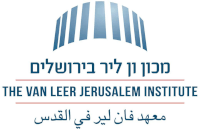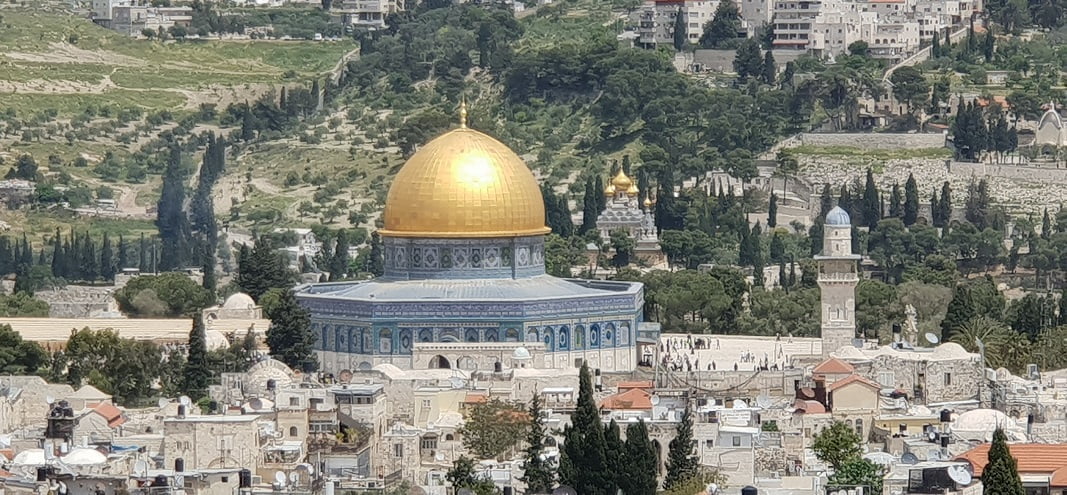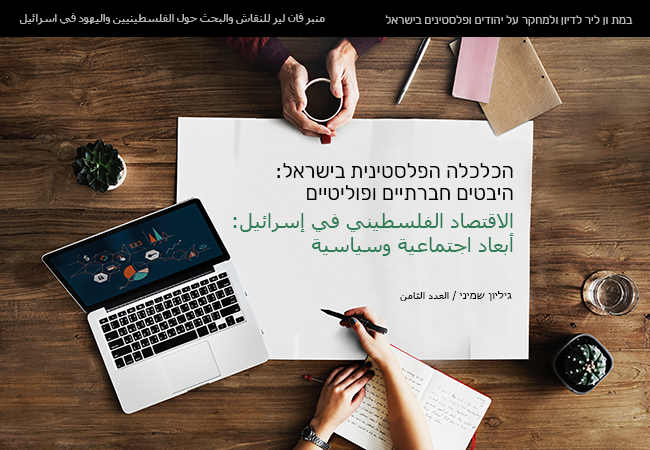A.
The twenty-first century is bucking the short legacy of the twentieth century, the one that began after World War II. The liberal euphoria spawned by the fall of the Berlin wall and the election of a black US president gave way to the despondency that followed the election of authoritative leaders in Western countries. The opening of borders heralded by the EU was replaced by strict border controls after 9/11 and masses of immigrants from Asia and Africa knocking on the gates of Europe. Technology connects people on a universal scale, but outside the virtual world, the walls of identity become thicker and higher. The hope – whether realistic or imaginary – generated by the Oslo Accords was replaced by despair, by turning the back on the very possibility of resolving the Israeli-Palestinian conflict, and by a deepening of Israeli control over the Palestinians.
With one exception, borders did not disappear in the liberal twentieth century. On the contrary, the dissolution of the Soviet Union increased the number of independent states worldwide and added new political borders. The exceptional case is the unification of Germany. When the political split between East and West Germany collapsed, the common denominators – primarily, the shared language, history, religion and culture – resurfaced. These fundamental elements of the German identity prevailed over the political imagination and ideological utopia that had divided the country. The Israeli-Palestinian case is different because it involves two national groups that do not share a language, history or religion, battling for control of the same piece of land. To each one of these peoples, the borders are important. They are of course important to the Palestinians, who have never enjoyed even a single day of political independence in their country. Borders create a sense of belonging to a place and to a people, and provide a sense of security; they give meaning for both individuals and to a public and are sustained through symbols and myths. We cannot avoid creating a border between Israel and Palestine, a border between two identities and between two peoples. It will be based on the 1967 lines, and Palestine will receive territorial compensation for every square foot of land of the Israeli settlements in Jerusalem, whose annexation to Israel Palestine will recognize. The Jewish Quarter and the Western Wall will be under Israeli sovereignty; the rest of the Old City will be under Palestinian sovereignty.
B.
Jerusalem and al-Quds are two border cities. We are not dealing with one united city or with a multicultural city, but with two frontier-cities. In a frontier-city, the members of one group – in Jerusalem it comprises some forty percent of the city’s residents – are struggling to free themselves of the control of the other ethnic group and of the political framework that Israel has imposed on them. Unlike frontier areas that are in the margins politically, demographically and geographically, Jerusalem and al-Quds are a geographic, symbolic and political center. In each one of them reside roughly ten percent of the total number of Israelis or Palestinians, and together they form an urban space that counts more than one million people. Within this space there is an interdependence between the two cities, which unfortunately is not between equals. In these respects, Jerusalem differs from the other border areas between Israel’s sovereign territory and the territories it occupied in 1967.
The key question for Jerusalem and al-Quds is what kind of border will be erected between them: rigid and closed, hybrid – or entirely open. A closed border with closely monitored crossings will lead to the decline and degeneration of both cities. In the negotiations on the Israeli-Palestinian permanent status arrangements, Israel demanded the establishment of a rigid border in Jerusalem as in the rest of the country, whereas the Palestinians supported dividing the sovereignty and maintaining a fully open city. The Israeli position was based on the views of conservative security officials, and on the desire to separate itself from the Arab East. The municipal interest, the questions of how the city will function and develop and what daily life in it will actually look like, were abandoned. On the Palestinian side there was awareness of these questions, but beyond the principle of an open city, the Palestinian delegation did not present an alternative to Israel’s vision of a rigid border.
A close examination of Israel’s proposal, which cannot be presented in detail in this brief essay, shows that a rigid border, like that of an airport, cannot be set up on the boundary of the Old City without destroying the urban fabric of life. And outside the Old City, in many places Israeli homes and Palestinian homes literally put up against each other. Erecting a wall there would destroy the fabric of life of both sides. It is enough to observe the damage wrought to the urban fabric of life of the Palestinians by the separation wall that Israel put up in East Jerusalem.
C.
The expansion of Israeli settlements into al-Quds does not prevent the city’s partition between two sovereign states but rather prevents the placing of a rigid border between them. A separation into two states and two capitals requires thinking differently about Jerusalem than about the rest of the country because of the unique aspects of Jerusalem and al-Quds. The starting point needs to be the best interest of the fabric of life in the two cities. The state interests must accommodate themselves to the urban reality, and not the other way around.
The fabric of urban life in Jerusalem is delicate and multidimensional. Violence is not its only characteristic, despite its prominence. In no other place between the Jordan River and the Mediterranean Sea is there such a great scope and variety of encounters and reciprocal relations between Jews and Arabs as in Jerusalem. These everyday links create and shape the urban space; they are flexible and move quickly from mutual contact in times of calm to withdrawal in situations of conflict. The mutuality is the routine, while the conflict is a disturbance and an exception. A political accord and a “soft” border that is easily crossed would strengthen these mutual ties. Below I offer several preliminary principles that need to be developed by concretely addressing the geographic and social reality in the city.
The fabric of life that is unique to Jerusalem and al-Quds requires both central governments to transfer most of the authorities to the two municipalities so that the space is managed mostly by locals. This is especially relevant to the domains of planning and building, infrastructures, policing and border management. Shared arrangements and shared institutions will need to be established between the two cities to handle cross-border issues: transportation, higher-education in Israeli institutions, medical treatment in an Israeli institution, environmental protection, employment, the development and administration of tourism, and the protection of holy sites and historical sites of one side that are under the sovereignty of the other side – for example, the Jewish cemetery on the Mount of Olives, synagogues and yeshivas in the Muslim Quarter, mosques and Muslim and Christian cemeteries in the territory of Israel. These arrangements will create a kind of urban confederation on certain defined issues.
The economic arrangements that apply to Jerusalem may be part of the general agreement between the two states, or they may be unique to the city. For example: the parties could choose to declare a free-trade zone and give both national currencies a legal status; alternatively, they could create a unique economic regime designed to encourage international investments and development. The separation into two capitals will not require disconnecting the water and electricity infrastructures of East Jerusalem, which are currently connected to the Israeli systems; the separation will happen at the level of the management of the infrastructure and the billing systems. When the need arises to renew infrastructures in al-Quds, the new ones will be Palestinian.
The borders between the cities and the states will be marked and there will be many and diverse border crossings between the two cities. Determining their location and the specific crossing arrangements will require a detailed examination of the border areas and an adjustment of the arrangements to the particular lay of the land and to its function in the urban fabric. In general, the approach to the question of security in the open space will be different from the present approach. Today, the typical pattern of Israeli security arrangements is one in which every person and every bag or luggage is checked by Israel (and only by Israel), and this is done in one place and at one time. This approach requires large border terminals, creates bottlenecks and severe congestion, and prevents the free flow of people and goods. Even though the border is international, these security patterns will need to be changed, and Israel’s exclusive control will need to be replaced with joint control. Modern technology allows us to conceive of operating soft border crossings and of distinguishing between different publics of border crossers. So, for example, there could be different arrangements for residents of Jerusalem/al-Quds, versus visitors and tourists. Modern technologies like biometric identification, cameras and smart-city technologies will enable a fast and convenient crossing. Policing patterns will also need to change in this process, from violent Israeli policing to joint and friendly policing, and to this end, a joint police authority will be established that will coordinate cross-border activity. All of these measures will be grounded in new legislation that will be attentive to avoiding any harm to privacy through the use of the new technologies.
D.
One of the lessons from the Oslo Accords is that the discussion of Jerusalem should not be put off until the end of the negotiations. On the contrary, the discussions need to start with Jerusalem, because within the city are represented all the issues that await agreement: sovereignty, settlements, security, holy sites, refugees, borders, infrastructures and economics. There has never been an independent Palestinian municipality in Jerusalem, and since the latter part of the nineteen nineties, Israel has effectively crushed the civil-society leadership in East Jerusalem. To overcome this gap and to avoid economic exploitation of the weaker party by the stronger party, the gap needs to be reduced as soon as the political process begins, even before there are any agreements. Leaving East Jerusalem weak, dependent and exploited is morally wrong and will ultimately also harm the quality of life in West Jerusalem.
E.
Since Jerusalem is a live and delicate urban fabric, any arrangement in Jerusalem will require a transitional period. Unlike with the Oslo Accords, this will be a transitional period whose final target will already be agreed and defined, with both sides implementing it gradually. The cities will receive international recognition already at the outset of the transitional period. During this period, management of the infrastructures of al-Quds will be transferred from Israel to the Palestinian side; an international “Marshall Plan” for the development of al-Quds will be established with the aim of advancing the city toward the goal of equality with Israeli Jerusalem; and representatives of al-Quds will participate, alongside the donating bodies, in managing the investments, planning the goals and implementing them. All of this will be done separately from the Israeli municipality, and as part of the establishment of the municipality of al-Quds. The wall that cuts through Palestinian neighborhoods and separates the West Bank from al-Quds will be destroyed. The monitoring of people entering Israel and the West Bank will be carried out in a friendly and considerate manner by Palestinians and Israelis. During the transitional period, Israeli settlements in East Jerusalem will not be expanded beyond their current parameters, and the demolition of homes and other Palestinian buildings in East Jerusalem will be stopped. Israel will cease all confiscation of lands and houses in East Jerusalem and will open no new police cases for building violations in this area.
Even before the negotiations, and during them, Israel will allow the Palestinian residents of Jerusalem to elect a city-wide representation that I will call “the council.” Israel will allow the re-opening of the Orient House and will re-instate its confiscated library, records, photographs and archive. Each neighborhood will elect three to five representatives to the council, which will meet regularly in the Orient House. Institutionally, the council will function outside of the Israeli municipality, but it will maintain ongoing contact with the Israeli municipality to resolve the problems of the residents it represents. The council will be allowed to recruit the help of professional experts, and Israel will not prevent the council from consulting with representatives of the Palestinian Authority and the PLO. The council will open a bank account in Israel, and, if it wishes, also in a Palestinian bank, where it will deposit the international donation and investment funds that it will raise for the development of East Jerusalem and the strengthening of its civil society.
Jerusalem is a key point in attaining an Israeli-Palestinian agreement not only because of the holy sites; it is an urban space that both sides shape and to which both feel a sense of belonging. Its prosperity .depends not on merely one of them but on their collaborative efforts.1For an elaboration, see here and here.
- 1

















